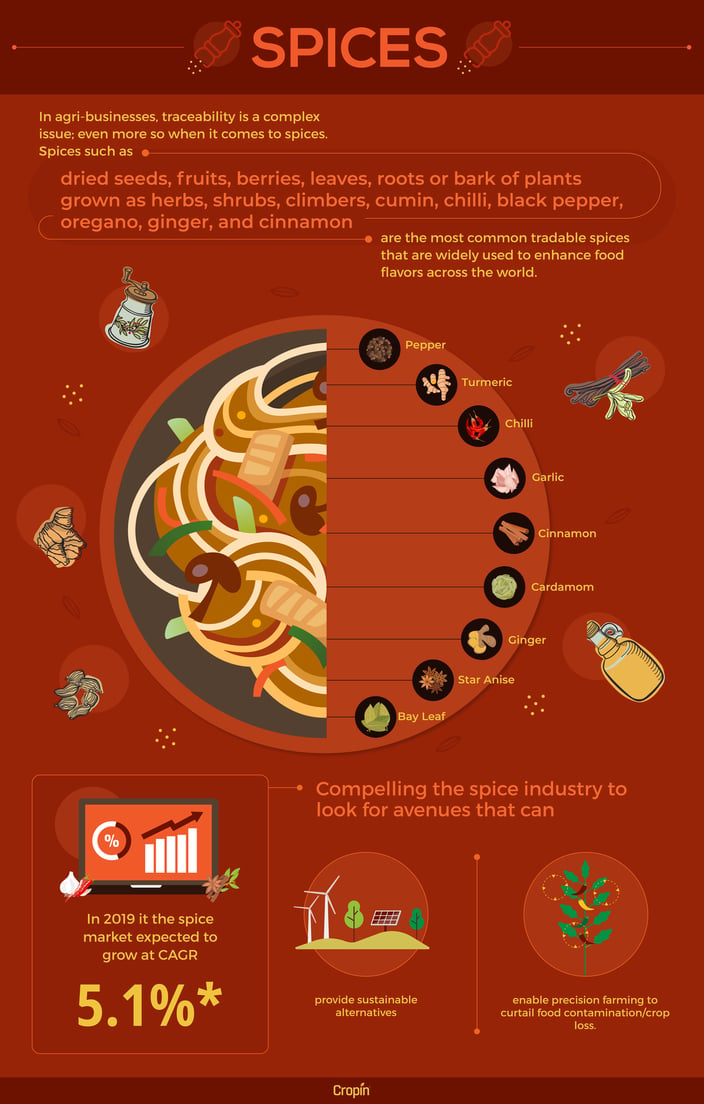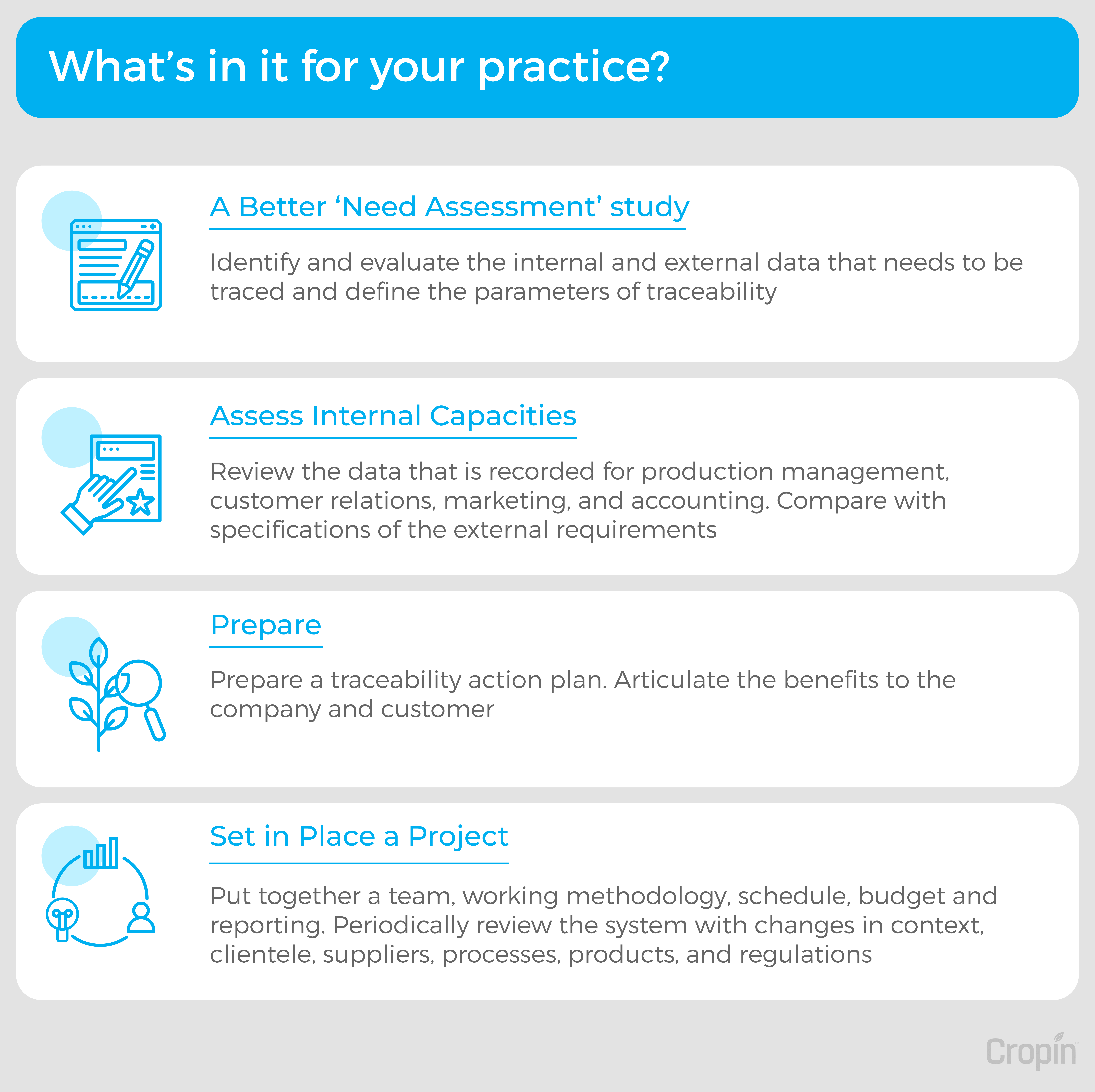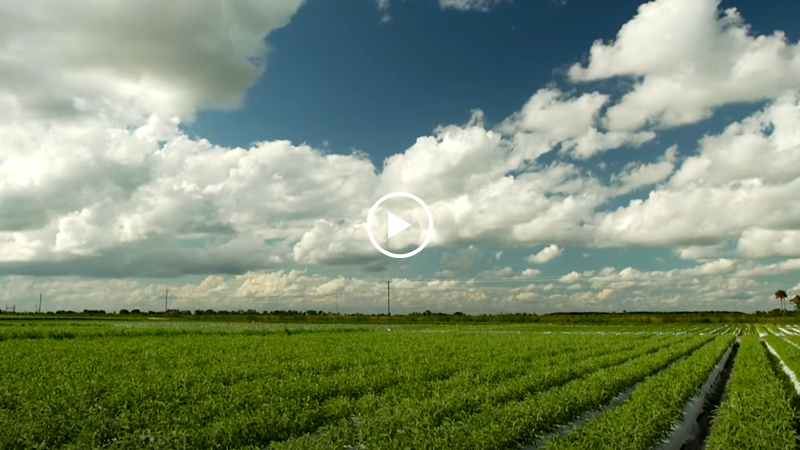Today, customers are more informed and inquisitive about the origin and safety of the food they consume because they want to lead healthier lives. The digital platform has become the most important decision-making tool for farming companies of the 21st century. It can collect, store, process, manage, and disseminate all kinds of data and empower customers to make informed choices.
Traceability simply translates into ‘going back to roots’; it is the backward integration of information. It means the ability to track food that will be used for consumption through all stages of production, processing, and distribution. Traceability is a way of responding to and mitigating potential risks that can arise in food (or in this case spices) production and distribution, hence ensuring that it is safe for consumption. This blog post delves into the challenges faced during overseas shipping, exports, and certifications, and the solutions to overcome them.
Food labeling and barcoding are just the beginning.
In agri-businesses, traceability in agriculture is a complex issue; even more so when it comes to spices. Spices, such as dried seeds, fruits, berries, leaves, roots, or bark of plants grown as herbs, shrubs, climbers, cumin, chilli, black pepper, oregano, ginger, and cinnamon are the most common tradable spices that are widely used to enhance food flavors across the world.
With an exploding population rate, it becomes difficult to keep a check on food productivity as farmers resort to pumping their fields with an alarming rate of pesticides. In 2019, the spice market expected to grow at a CAGR of 5.1%, compelling the spice industry to look for avenues that can provide sustainable alternatives and enable precision farming to curtail food contamination/crop loss.

Some agricultural products such as culinary herbs may be contaminated by pathogens, naturally occurring toxins such as mycotoxins, and even pesticides pose a serious risk of accidental contamination.
Unfortunately, many agribusinesses still keep manual records that are not always an easy or efficient way to locate a problem. Often issues are not traced and can sometimes be a very costly and time-consuming process to retrace the producer. This inevitably leads to huge business losses due to consign rejection.

So, what needs to be done?
Technology solutions have been an enabler to ensure quality management and traceability by integrating all data from producer to consumer throughout the value chain. Businesses that have adopted such technologies have efficiently managed their farmers and taken care of the IPM and chemical application schedules, PHI, and chemical residue, helping them in building efficiency in their entire production, processing, and export operations. Traceability can help maintain the integrity of the value and supply chain(s) so that it will be possible to identify the materials and other ingredients that are added to it in the process.
Why opt for ‘Traceability’ in the first place?
Farm-to-fork traceability in agriculture is gaining traction.
- Traceability can be added to the value chain of farming via farm analytics and OQ coding of the agriculture produce, thus helping organizations and/or farmers adhere to various certificate compliances globally.
- A system not only determines the traceability of farm produce but even helps in early decision making due to harvest prediction and follow-ups on the package of practices defined for agriculture and monitored through the web and mobile applications.
- It helps monitor management cost, operational efficiency, and market expansion for companies due to processes followed which are transparent and defined.
- Traceability solutions help remove out-of-date product losses, lower inventory levels, and raise the effectiveness of logistics, and distribution operations.
- Improved customer confidence also helps with branding and improved brand equity through word of mouth within the industry.

Traceability initiatives rely on technologies to provide efficient and accurate ways to track and trace products and their movement across the supply chain.
This includes technology for product identification, information capture, analysis, storage, and transmission of data as well as overall systems integration. These interconnected systems also include hardware such as measuring/sensing equipment, identification tags, and labels with remote sensing capabilities. All these data points are collated and stored in our cloud server and further data algorithms are run to help you obtain valuable farm insights.
Implementation Challenges in a Prominent Indian Spice Company
A prominent Indian Spice Company’s agribusiness division was established as an independent unit in the year 2004 at Guntur, Andhra Pradesh — the “chilli capital of the world”. It has emerged as a leader in backwards-integrated food-safe spices and the largest exporter of spices in the whole world. Currently, it deals in chilli, turmeric, ginger, seed spices, and blended spices handling around 35,000 metric tonnes of spices annually.
The Company engages extensively with over 10,000 farmer partners across 170 villages with a crop area of over 35,000 hectares to offer customers the finest food-safe spices which comply with the most rigorous food safety norms. Through its century-long partnership with farming communities, the Company is uniquely positioned to implement large-scale interventions at the farm level which focus intensely on building sustainability — in terms of agricultural production, livelihoods, and environmental resources.
Data capturing was the major challenge because the field agents were recording the farm data and other information manually, i.e., on pen and paper. This led to data inconsistencies, and maintaining a database (compilation of data) had become a strenuous job.
The other challenge was that there was no data visibility across the production stage. The management lacked critical information about the activities going on in the field on a regular basis.
Cropin’s farm management solution SmartFarm provides a comprehensive idea of the farmers and plots registered along with the acreage. The company onboarded close to 4,200 farmers on Cropin’s platform to digitally monitor and manage two crops, cumin and chilli, spread across 24,000 acres of land across four states of India. Customized reports were also provided based on field observations to help the management take real-time, insightful decisions.
Using SmartFarm, the farmers were able to receive alerts on pest infestations or crop diseases, and also advisories on managing the pest attack.
One of its major challenges was to map and monitor real-time Farm Activities on the ground level. It was very difficult for them to manage data using only a pen and paper, and manually-prepared excel sheet entries were not reliable. It was also hard to validate the data without proper records.
Capturing data along with visuals at all levels from pre-sowing until harvest has helped them achieve 100% visibility over farm operations – data-managing farmer and plots, adherence to the package of practices, harvest details, on-farm activities, events, and pest-related advisories. The insightful, real-time data helps the company in quick and effective decision-making to drive sustainable strategies.
How to better the Spice Value Chain
Another prominent spice company manufactures/processes spices at its facility located near Cochin (Kerala, India) with a capacity of 20,000 tonnes per annum. The company predominantly supplies red pepper, turmeric, ginger, and black pepper to customers primarily located in the USA and Europe.
The company has business interests in agricultural commodities, tea, solvent extraction, leather, rubber, vanilla, cardamom, and other spices. The organization’s business goals are supported by the four pillars of integrity, sustainability, health, quality, and food safety.
The company supplies its products to more than 140 countries and manufactures, markets, and distributes spices, seasoning mixes, condiments, and other flavoring products for the food industry, including retail outlets, food manufacturers, and food service businesses. They partnered with Cropin in 2017 to institute a sound system to monitor on-field activities and keep a keen eye on the use of agri-inputs by farmers. Evidently, digitization of farm operations was considered the first step towards addressing their core challenges in farm management.
SmartFarm, Cropin’s end-to-end farm management solution, was implemented to monitor the various farm activities leading up to harvest. The field team created complete digital records of the farm and the farmer along with details regarding the crop in cultivation. The data collected from the farm is then saved in Cropin’s secure cloud platform, which can then be accessed by the key members of the company anytime, anywhere.
SmartFarm also delivers accurate real-time insights in the form of customizable reports based on the ground truth data, to empower the organization with data-driven farming and farm management by tracking, managing, and monitoring every step of the process to increase productivity, traceability, and output predictability.
For the upcoming season, Cropin also implemented RootTrace to help the organization achieve exactly what the name suggests — trace the origin of the produce to its exact location, along with the farmer’s image, company profile, sowing and harvest dates, agrochemicals used during its cultivation, images taken at various stages of growth, alerts raised if any, and lab reports to determine the crop’s quality.
Cropin’s successful implementation of its digital technologies enabled the organization to remotely monitor and manage chilli crops across the 9 districts in India — Jayashankar Bhupalpally and Khammam in Telangana, East Godavari, Krishna, Warangal, and Kurnool in Andhra Pradesh, and Raichur, Bagalkot, and Bellary in Karnataka. The digitization of farming data also increased the visibility of farming activities for better operational efficiency.
Overcoming challenges
Applying the ‘Web-Mobile-Cloud-Analytics platform’ in traceability systems includes information systems management; scanning and digital technology for product identification, image capture, storage and display; biosensors for quality; and geospatial tracking technology, which meets the needs of medium-scale farms and larger agribusinesses. It makes rural access inexpensive and robust by combining emerging and traditional technologies to overcome constraints. It is an organizational design that brings together partners with specific value propositions and challenges.
As the use of spices continues to expand and develop, it is now even more important to ensure that all stages of the supply chain play their role in ensuring safe spices are free from potential contaminations, and ethically sourced before it is sold to the global consumer market.
To know if Cropin is the right fit for your organization, contact our Solutions Expert today!










